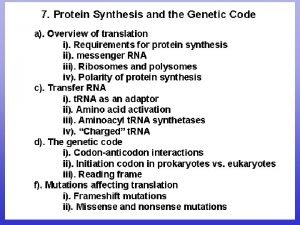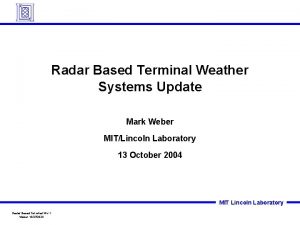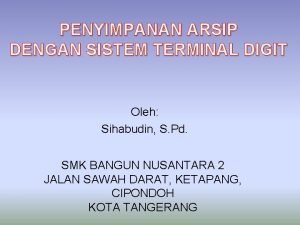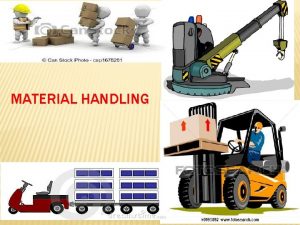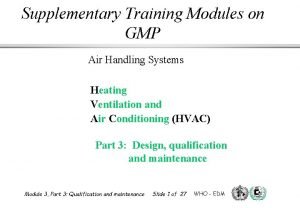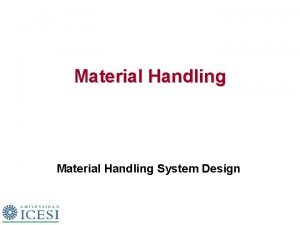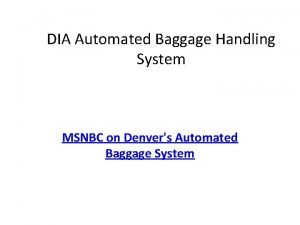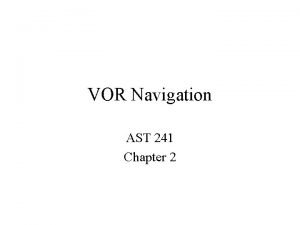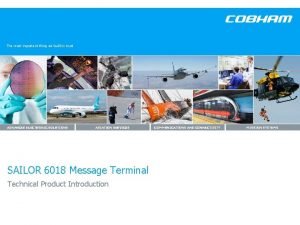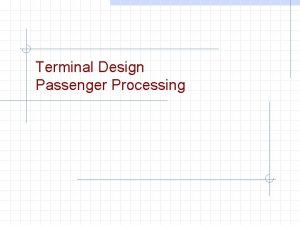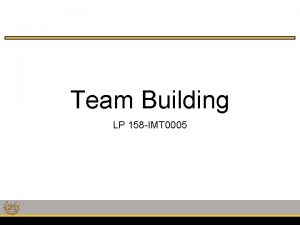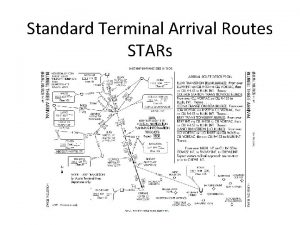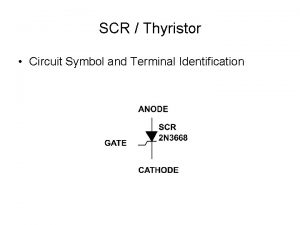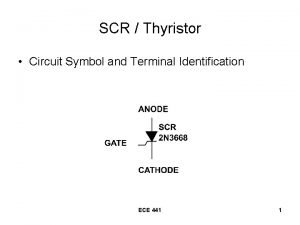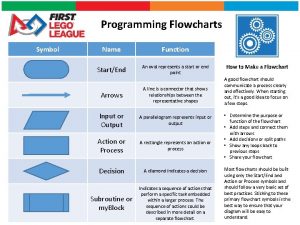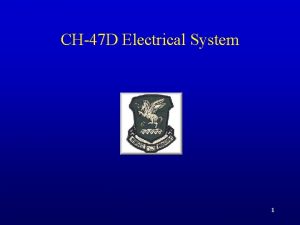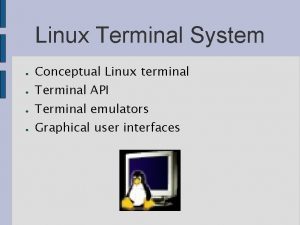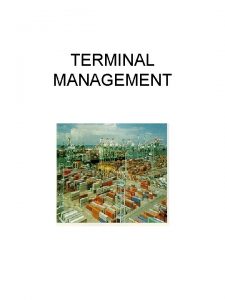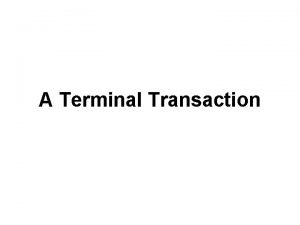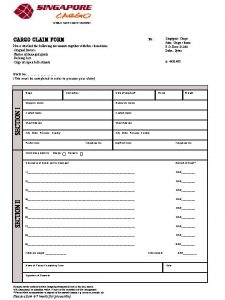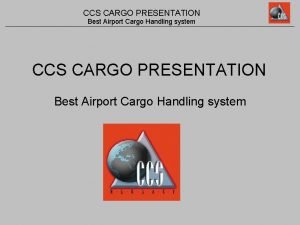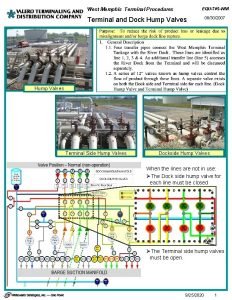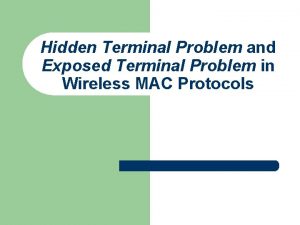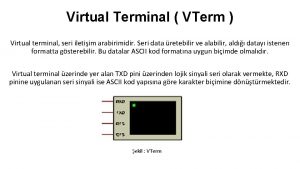CH47 D Cargo Handling System Cargo Handling Terminal















































- Slides: 47

CH-47 D Cargo Handling System

Cargo Handling

Terminal Learning Objective (TLO) n n n Action: Describe the components, operational characteristics, functions, limitations and emergency procedures of the CH-47 D Cargo Handling Systems Conditions: In a classroom, and given a student handout Standards: Correctly answer in writing, without reference, four of six questions pertaining to components, operational characteristics, limitations, functions, and emergency procedures of the CH-47 D Cargo Handling System, IAW TM 1− 1520− 240− 10 (Operator’s manual) and the student handout

Terminal Learning Objective (TLO) – (Cont. ) n Safety Requirements: None n Risk Assessment Level: Low n Environmental Considerations: None n Evaluation: Each student will be evaluated on this block of instruction during the third written examination. This will be a criterion type examination requiring a GO on each scored unit. You will have 90 minutes for the exam

Learning Step/Activity #1 n Describe the components, operational characteristics, functions, emergency procedures and limitations of the Cargo Ramp/Door

Cargo Ramp/Door n Located: n n Operated: n n n Loading and Unloading Personnel and Cargo Maximum Weight: n n Hydraulically Primary Use: n n Sta. 486 3, 000 LBS or 300 PSF Cargo Door: n n n Jettisonable Provide Closure Contains a emergency exit panel

Components – Cargo Ramp

Ramp Control Valve n Located: n n Between Sta. 482 and 502 R/H side Three position: n n UP STOP DN (Down) Purpose: n Used to Stop the Ramp between: n n Full UP Full Down

Actuating Cylinders n Located: n n n L/H and R/H side of the Ramp Hydraulically Contains: n Mechanical locks n Prevents: n Accidental opening Keeping ramp closed n Hydraulically unlocked n

Cargo Door Actuated Motor n n n Located: Inside the ramp Contains: Reversible motor (Extend and Retract) Controlled: Sequence valve

Sequence Valve n Located: n n Use: n n n R/H side Sta. 490 Mechanically operate ramp Sequences: n Extension n Retraction Purpose: n Keep cargo door: n Retracted n Do not press Valve Plunger n Do not Unlock unless ramp is Down

Pressure Actuated Valve n Purpose: n n Stop ramp operation: n Extending/Retracting cargo door Red plunger: n Manual override n Use ONLY if ramp fails to operate normally

Ramp PWR Switch n n Located: Overhead hydraulics panel Switch: Three position: n n n OFF ON EMERG (Emergency)

Utility Return Control Module n Located: n n Purpose: n n n L/H side Sta. 534 Central collection point Transfer cylinder: n Holds fluid (Actuators) Indication: n Filter indicator

Emergency Utility Press Valve n Located: n n R/H Side Ramp Sta. 527 Purpose: n Operate ramp: n Pressure from APU Start Accumulator

Learning Step/Activity #2 n Describe the components, limitations, emergency procedures and operational characteristics of the Triple Cargo Hook system

Triple Cargo Hook System Page: 5 -5 -1 n Rated: n n Center – 26, 000 LBS Forward – 17, 000 LBS Aft – 17, 000 LBS Tandem – 25, 000 LBS (Fwd and Aft Hooks)

Center Cargo Hook n n n Mounted: Sta. 331 (Inside the Cabin Escape Hatch) Beam Assembly: Rotates, Pivots and allows the Hook to Swing Air Charge: Minimum – 2, 000 PSI Types of opening: Hydraulically, Pneumatically, and Manually Manual Release: 2408 -13 Entry

Forward and Aft Cargo Hook n Rated: n n n 17, 000 LBS 88° degrees (Fwd and Aft) 58° degrees (Left and Right) n Located: Sta. 249 Sta. 409 n Accessible: n n n Ground Personnel Hook load 18 -22 LBS Types of Release: n n Electrically (Normal/Emergency) Manually

Cargo Hook Control Panel n MSTR (Master) Switch: n n Hook Switch: n n n MSTR RESET OFF ARM Five position Switch position determines Hook Load Lights: n n n Fwd and Aft Illuminate – 150 LBS Sensors

Hoist Operator's Control Panel n n n Located: R/H side Sta. 320 Three Position: ARM, RMTE (Remote) and RESET Activated: MASTER switch – ARM

Master Caution/Advisory Panel n Purpose: Indicates respective Hook – Open n n Turn lights off: - Master switch – RESET Dual Hook Fault Lights: n n Indicates loss of electrical power Fwd and Aft Hook – Manually

Jettisoning External Cargo n Primary Method: n n CARGO HOOK EMERG switch – REL ALL Alternate Method: n Forward, Center and Aft hook release lever – Pull aft Page: 9 -2 -1

Learning Step/Activity #3 n Describe the components, limitations and operation of the Cargo Winch/Rescue Hoist system

n Cargo Winch and Rescue Hoist System Located: n n Heater closet (Compartment) Hydraulic motor Mechanical brake Cable length: n n Purpose: n n n 150 feet/1/4 inch (Steel) Aid loading/Unloading – Cargo Hoist loads – Thru rescue hatch Accessories Storage: n n Pulleys Cable/Hook quick disconnect

Cable/Hook Quick Disconnect Cover Guard Cap Quick Disconnect Device n Guard Cover – Must be installed

Selector Lever n Mounted: n n Use: n n Top of the winch assembly Select Mode of operation n RESCUE n CARGO Normal Operation: n n No. 1 DC Bus No. 1 PDP

Cable Cutter Arming Device n Located: n n Back wall Sta. 95 Arming Device: n n Installed Winch – CARGO position

Maximum Load n 12, 000 LBS with the aid of pulleys

Straight Line Pull 3, 000 LBS

One (1) Pulley Attached 6, 000 LBS

Two (2) Pulley Attached 9, 000 LBS

Additional Pulleys 12, 000 LBS

Winching Out

Operators Manual Caution n Do not exceed 3, 000 pounds single line pull. Overload will result in the winch overload switch actuating to stop the winch Page: 4 -3 -8

Winching Operation n Reel in speed: n n Remove slack: n n Applying loads Limit switches: n n n Single line pull – 0 to 20 feet per min (Cargo mode) IN OUT Provide slack: n Load is secure n INTERNAL Load

Operators Manual Caution n To prevent dangerous electrical shock to personnel being hoisted, the cable must touch the Ground or Water prior to contacting personnel Page: 4 -3 -13

Rescue Operation n n n Rescue Mode – Hoisting light loads Selector Lever – RESCUE Position Cargo Hook – Removed Structural Limit – 600 LBS max Reel in Speed – 0 to 100 feet per min In Limit Switch

Cable Cutter Device n Cable Cutter Device: n n Must be installed Pulleys: n n n Sta. 140 Sta. 120 Sta. 331 (Cutter device)

Hoist Controls n Located: Cockpit overhead panel n n n HOIST MASTER switch – REMOTE, OFF and PLT Rotary Control Switch – IN/OUT Cable Cutter Switch – CABLE CUT and ON (Red guarded)

Hoist Operator's Panel n Located: R/H side Sta. 320 n n n CARGO HOOK RELEASE CABLE CUTTER (Red guarded) Toggle Switch – Winch cable IN/OUT PRESS TO TALK Winch Arming Trigger

Winch Control Valve n Located: n n Sta. 120 L/H side Use: n n n Emergency Loss of electrical power Break shear wire Push in plunger Rotate knurled knob Return knob – Center (OFF)

Operators Manual Caution n When the winch is operated in emergency mode, the cable limit switches are disabled Page: 4 -3 -9


Check on Learning n What must you do to cause the ramp to raise or lower if it fails to operate normally? n n What is the primary method of jettisoning external cargo? n n EMER REL ALL switch What caution must be observed when operating the cargo winch in the emergency mode? n n Press the red button on the Pressure Actuated Valve Cable Limit Switches are inoperative How is the ramp kept closed (up) and locked? n Mechanical Locks

Summary

Don’t Forget: EP’s and Limitations!
 N terminal c terminal 5' 3'
N terminal c terminal 5' 3' Terminal and non terminal in compiler design
Terminal and non terminal in compiler design Tts dry cargo handling
Tts dry cargo handling Mark weber mit
Mark weber mit Terminal digit adalah
Terminal digit adalah Terminal access controller access control system
Terminal access controller access control system Terminal access controller access-control system
Terminal access controller access-control system Terminal automation system (tas)
Terminal automation system (tas) Alphabetical filing system for medical records
Alphabetical filing system for medical records Airfreight booking software
Airfreight booking software Cargo community systems
Cargo community systems Bol in trucking
Bol in trucking Cargo community system
Cargo community system Material handling means
Material handling means Oq training modules
Oq training modules Handling system design
Handling system design Dia automated baggage handling system
Dia automated baggage handling system Open closed isolated system
Open closed isolated system Digestive respiratory and circulatory system
Digestive respiratory and circulatory system What is ballistics
What is ballistics Terminal vor range
Terminal vor range Disking teeth
Disking teeth Trigonometric functions of real numbers
Trigonometric functions of real numbers Standard position of an angle
Standard position of an angle Unit circle reference number
Unit circle reference number Sailor 6018 message terminal user manual
Sailor 6018 message terminal user manual Terminal quintero enap
Terminal quintero enap Terminal learning objective
Terminal learning objective Deplaning curb
Deplaning curb Gate and terminal example
Gate and terminal example Terminal restlessness
Terminal restlessness Terminal agitation symptoms
Terminal agitation symptoms Army terminal learning objective
Army terminal learning objective Standard arrival route
Standard arrival route Kennedy terminal ulcer presentation
Kennedy terminal ulcer presentation Todas sin ta cos trigonometria
Todas sin ta cos trigonometria Neurotransmissores
Neurotransmissores Fluidization velocity
Fluidization velocity Scr thyristor symbol
Scr thyristor symbol Scr symbol
Scr symbol Npv with wacc formula
Npv with wacc formula Penyakit terminal adalah
Penyakit terminal adalah Intrapulmonary bronchi
Intrapulmonary bronchi Bronchiole.
Bronchiole. Stage edpi
Stage edpi Salah satu nilai terminal rvs
Salah satu nilai terminal rvs Terminal cisternae
Terminal cisternae Terminal flowchart symbol
Terminal flowchart symbol
